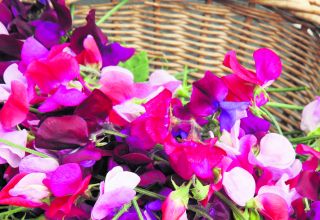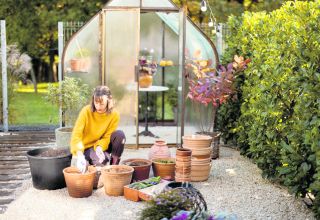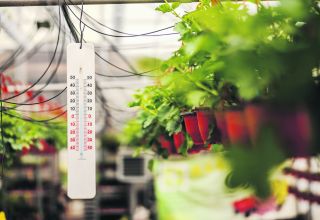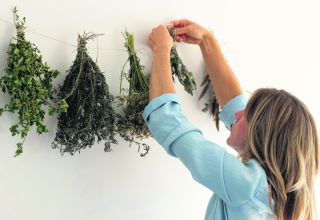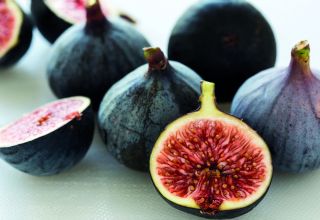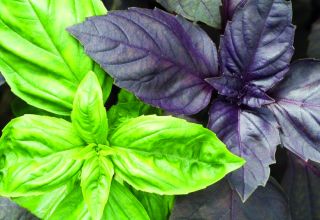Cider apples are deeply embedded in west country gardens and culinary culture. They offer a distinct range of flavours not typically found in eating apples and for gardeners seeking a rewarding, sustainable, and creative pursuit, planting cider apple trees is a fruitful choice.
Growing cider apples can be highly rewarding for gardeners, combining the pleasures of growing with the satisfaction of producing a unique and valuable crop.
Unlike dessert apples, cider apples are grown specifically for their complex balance of sugars, acids, and tannins, which are essential in creating flavourful and well-structured ciders. Whether gardeners are aiming to make homemade cider or just try something different in their orchard, the benefits of growing cider apples are numerous.
After a decline through much of the 20th century cider apples and artisanal ciders are now experiencing a huge revival. Growing cider apples is very similar to growing dessert apple varieties. They have similar cultural requirements of climate, soils, site selection, nutrition, irrigation and pest and disease control.
The three pillars of quality cider fruit are the varieties used, where they were grown, and the way they were grown. This principal is widely accepted in wine grape growing yet is still a controversial topic in apples.
Apples picked for eating are almost never picked when fully ripe. This is because a major element of the eating apple is it’s crispness. Apples grown for cider should be picked at maximal ripeness. For many varieties, especially the European cider varieties, this means waiting until the apples drop to the ground. For others, this means waiting until the flavour and sugar peaks, a point at which the apple is often soft and reeking of ripe aromas.
Cider apples are categorized into four main types based on their acid and tannin content: sweet, bittersweet, sharp, and bittersharp. This diversity allows gardeners to experiment with different blends, producing a wide variety of ciders with unique taste profiles.
Many heritage cider apple varieties, such as ‘Dabinett’, ‘Kingston Black’, and ‘Yarlington Mill’, are valued for their historical importance and distinctiveness. By growing these apples, gardeners help preserve rare cultivars that are increasingly at risk due to commercial farming’s focus on a narrow range of eating apples.
Cider apple trees are generally more resilient and require less maintenance than many modern dessert apple cultivars. Many traditional cider apple varieties are well adapted to local climates and soil conditions, and are often more tolerant of pests and diseases.
This resilience reduces the need for chemical treatments, making them ideal for organic or low-intervention gardening.
Once established, cider apple trees can thrive with basic care, offering high yields year after year. Younger producers are reintroducing heritage techniques such as the champagne method, keeving, and “pet nat” to craft fine ciders—a trend that’s elevating cider’s image and pricing it alongside wine
Concurrently, genetic preservation projects—like those led by the University of Bristol and Sandford Orchards—are working to rediscover and conserve rare, lost cultivars with resilience to pests and climate change.
For many gardeners, the most exciting benefit is the opportunity to make their own cider. Home cider-making is a relatively simple process and can be tailored to suit personal tastes. By growing their own cider apples, gardeners can control every aspect of production—from cultivation to fermentation. This not only promotes self-sufficiency but also provides a deeper connection to the food and drink they consume. Homemade cider can also be shared or gifted, adding a personal touch to social gatherings and celebrations.
Beyond personal use, growing cider apples can offer small-scale economic opportunities. With the resurgence of interest in craft cider, there is increasing demand for high-quality cider apples among local cidermakers and community orchards. Gardeners with surplus fruit can sell or trade apples, or even collaborate with local producers. Some may even venture into their own small-scale cider business. Community apple presses and festivals also provide opportunities to connect with other growers and enthusiasts, fostering community spirit and shared knowledge.
Cider apple trees contribute positively to local biodiversity.
The trees themselves provide habitat and food for birds, insects, and pollinators.
Many traditional orchards are rich ecosystems that support a wide range of flora and fauna. Additionally, growing diverse apple varieties helps maintain genetic diversity, which is crucial for the long-term resilience of apple crops in the face of climate change and evolving pests.
Many cider apples flower late, and not all are self-fertile.
Mixing bittersharps, bittersweets, and sharps ensures good cross-pollination and balanced juice profiles.
Expect two to three kilos of apples to produce one litre of juice—ciders require substantial yields Harvest times vary: early cultivars like Frederick ripen mid October, whereas others like ‘Yarlington Mill’ or ‘Dabinett’ may hang until November.
Cider apple varieties
Cider apples are grouped by tannin and acidity:
- Bittersharp (high tannin, high acid): ‘Kingston Black’, ‘Dymock Red’, ‘Foxwhelp’.
- Bittersweet (high tannin, low acid): ‘Dabinett’, ‘Yarlington Mill’, ‘Harry Masters Jersey’.
- Sharp (low tannin, high acid): ‘Bramley’, ‘Grenadier’, ‘Tom Putt’.
- Sweet (low both): ‘Morgan Sweet’, ‘Ashmead’s Kernel’.
Signature cider apple varieties
- ‘Dabinett’: Highly popular bittersweet. Reliable, often self-fertile, and excellent for single-varietal cider.
- ‘Kingston Black’: Esteemed bittersharp, lauded as near “perfect” for cider but prone to disease and biennial fruiting.
- ‘Foxwhelp’/’Red Foxwhelp’: Historic bittersharp; powerful juice, often used for blending.
- ‘Crimson King’: Sharp with high acidity, heavy cropping, suited to blending.
- ‘Yarlington Mill’, ‘Major’, ‘Harry Masters Jersey’, ‘Ashton Brown Jersey’: Other stalwart bittersweets offering yield, tannin, or compact growth habits.
Numerous heritage and modern varieties—such as ‘Tremlett’s Bitter’, ‘Michelin’, ‘Morgan Sweet’, ‘Porter’s Perfection’—are available for blending or niche production. As of 2011, the UK was cultivating over 365 named cider apple varieties, with over two million new trees planted in preceding years.
Pests and diseases
Key threats to the health of cider apple include:
- Apple scab: Affects fruit and foliage—common in varieties like ‘Crimson King’ and ‘Kingston Black’.
- Canker: Impacts twigs and young wood.
- Fire blight: Especially problematic for varieties like ‘Brown Snout’.
- Mildew: Can affect leaves and soft shoots. Select varieties known for resistance to regional diseases—e.g. ‘Yarlington Mill’ resists mildew and canker, ‘Dufflin’ resists scab.
Cider apples – Origins and heritage
Some of the earliest documented cider apples trace back centuries. For example, ‘Foxwhelp’, a bittersharp cultivar prized for its potent cider, was referenced in 1664 by John Evelyn and commanded high prices by the early 18th century.
Similarly, ‘Kingston Black’, originating in Somerset,rose to prominence in the early 19th century as a premier vintage cider apple. By the mid-20th century, it was noted by research authorities as “more widely grown than any other cider apple” in west England.
Industrial cider-making in the mid-1900s favoured concentrate-based production, diminishing the cultivation of traditional apple varieties. But in recent years, a resurgence of interest—led by boutique cider producers and heritage conservationists—has sparked renewed planting and blending of classic varieties, often for high-end markets.
- Cider apples are enjoying a renaissance—driven by fine cider makers, heritage conservation, and renewed consumer interest.
- From 17th-century favourites like ‘Foxwhelp’ and ‘Kingston Black’ to mid-century declines and modern revival, cider history in the UK is rich and cyclical.
- Traditional spread orchards are giving way to semi-vigorous systems, with careful choice of rootstocks, pollination partners, and harvest planning.
- Varieties: Balance is achieved by blending bitter, tannic, sharp, and sweet types. Standouts like ‘Dabinett’ and ‘Kingston Black’ can yield characterful single-varietal ciders.
- Uses: Modern techniques and culinary fusion are reshaping cider, making it competitive with wine, both as a drink and a craft product.
Cider apples Q&A
How long does it take to grow a cider apple tree?
An apple tree typically takes seven to ten years to grow from seed to fruit-bearing maturity. However, if you start with a grafted tree sapling, it can begin to produce fruit in four years. With a dwarfing rootstock, varieties may bear fruit even sooner, often within three years.
How many apples does it take to make one litre of cider?
If you do have your own apple tree, a good tactic is to place a sheet under the tree and then shake the tree onto the sheet, this will ensure only the ripe apples fall from the tree. You’ll need approximately two kg of apples for every one litre of cider you want to produce.
What apples are used for cider in the UK?
‘Dabinett’ is the premier traditional English cider apple variety and produces a bittersweet juice. No home cider orchard should be without it. It is one of the few cider apples that can be used on its own, to make a ‘single varietal’ cider – most ciders are blended using different varieties.
What are the common cider making mistakes?
Volatile acidity, oxidative damage, and sulfur off-odors are three of the most common cider sensory deviations (faults) that can arise during production.
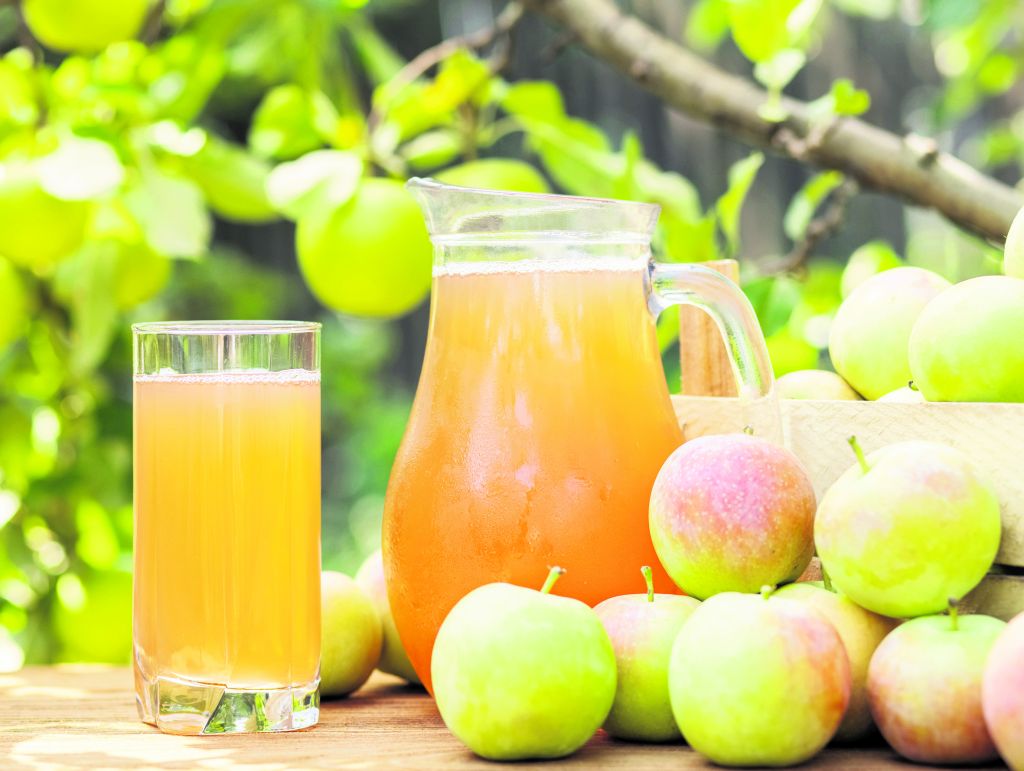
Is homemade cider shelf stable?
While hard cider can be aged for years, it becomes drier as time passes, and the general shelf-life of cider is a year or two. Cider will last but the danger is it will turn to vinegar if left too long.
How long before you can drink homemade cider?
In fact, a cider “brew day” could be as short as adding yeast to juice. Turnaround is quick too; you could be drinking your homemade cider in two or three weeks
Can you freeze apple cider?
Absolutely! Freezing apple cider is a simple and effective way to keep that delicious, fresh taste on hand year-round. No need for fancy equipment, and you can use a variety of containers to suit whatever amount you have left over.

